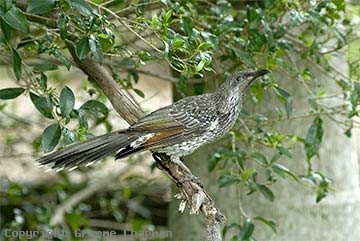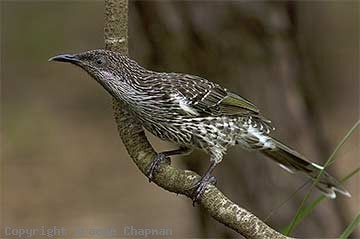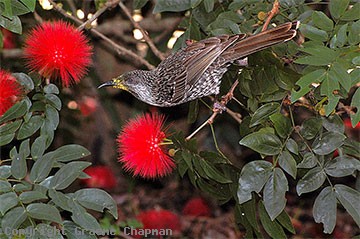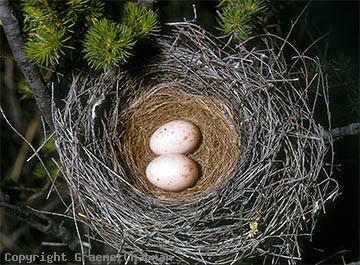
Little Wattlebirds occur throughout coastal south-eastern Australia from just north of Brisbane south to Tasmania and west to South Australia, including Kangaroo Island. Older books used to list them as inhabiting south-western Australia, but in recent times, the form in W.A. has been re-classified as a separate species, now called Western Wattlebird.
Because of their liking for grevilleas, banksias and other flowering native shrubs they are now common garden birds in many areas, not always with a positive outcome. Individual Little Wattlebirds, rather like Noisy Miners, can become very possessive about "their" garden (= territory) and aggressively pursue other small birds, so excluding them from an area. Even worse for some, is their habit of waking people right on daybreak with raucous "whacketty - whack" early morning calls, seemingly always right outside a bedroom window. (listen on sound page)
Like some of our other honeyeaters, Little Wattlebirds can have a double breeding season, first in the Spring and again in Autumn when many of our banksias come into flower. Often they lay only a single egg, very unusual amongst passerines in Australia. Many of our honeyeaters are well-known for their long distance movements, or migrations, often in search of flowering eucalypts, but Little Wattlebirds are quite the opposite and move very little - the longest recorded movement is only about 10 km.
The rufous wing patch visible mainly in flight is the best field mark. Adult Little Wattlebirds like many of our other honeyeaters have bluish eyes, in contrast to the Western Wattlebird which has red eyes.




